Abstract: The concept of the space-time continuum is one of the most profound and revolutionary ideas in the field of theoretical physics. It lies at the heart of Albert Einstein’s theory of relativity, which has reshaped our understanding of the fundamental structure of the universe. The space-time continuum is a fundamental and groundbreaking idea that has transformed our understanding of the universe. It unifies two seemingly distinct dimensions, space, and time, into a single, interconnected fabric that underlies the very nature of reality. This concept was famously introduced by Albert Einstein in his theory of general relativity, and it has since become a cornerstone of modern physics. This study provided critical analysis of the theory of Relativity and its exposure in Vedic literature. The relationship between space and time is a fundamental concept in modern physics, particularly in Einstein’s theory of relativity. This concept, known as the space-time continuum, has revolutionized our understanding of the physical universe. Surprisingly, there are intriguing parallels between the ancient Vedic literature, specifically the Srimad Bhagavata MahaPurana, and the modern scientific understanding of the space-time continuum. In this exploration, we will delve into these connections and elucidate the profound insights offered by Vedic texts regarding the interplay between matter and time. While these ideas are deeply philosophical and rooted in ancient cosmology, they offer a unique perspective on the nature of the material world and its relationship with time.
Full Article PDF: https://www.dinkumpublishers.com/djsi/d-0219/
Full Research Paper PDF : https://doi.org/10.13140/RG.2.2.35591.82085
- INTRODUCTION
The concept of the space-time continuum is one of the most profound and revolutionary ideas in the field of theoretical physics. It lies at the heart of Albert Einstein’s theory of relativity, which has reshaped our understanding of the fundamental structure of the universe [1]. The space-time continuum is a fundamental and groundbreaking idea that has transformed our understanding of the universe. It unifies two seemingly distinct dimensions, space, and time, into a single, interconnected fabric that underlies the very nature of reality. This concept was famously introduced by Albert Einstein in his theory of general relativity, and it has since become a cornerstone of modern physics [2]. Before delving into the intricacies of the space-time continuum, it is essential to understand the historical backdrop that led to its formulation. In the early 20th century, the existing theories of physics, namely Newtonian mechanics and Maxwell’s electromagnetism, were highly successful in describing the behavior of objects in motion and the behavior of electric and magnetic fields, respectively. However, there were inconsistencies and limitations in these theories, especially when it came to explaining the behavior of objects at very high speeds or in strong gravitational fields [3]. Albert Einstein’s breakthrough came when he realized that the conventional understanding of space and time as separate and absolute entities was incomplete. He postulated that these two dimensions were intimately connected, and their relationship was not as straightforward as previously thought [4]. According to his theory of general relativity, massive objects, such as stars and planets, warp the fabric of space-time around them. This warping, in turn, influences how other objects move through space and time. In essence, the presence of mass creates curves and dents in the space-time continuum, and objects, including light, follow these curved paths [5]. To visualize this concept, imagine placing a heavy ball on a rubber sheet. The ball causes a depression in the sheet, and any smaller objects placed on the sheet will move along curved paths as they are influenced by the depression. Similarly, the mass of celestial bodies creates distortions in the space-time continuum, which affects the motion of other objects in their vicinity. The space-time continuum has profound implications for our understanding of the cosmos. It explains phenomena such as the bending of light by gravity, known as gravitational lensing, and the orbits of planets around the sun. It also predicts the existence of black holes, where the curvature of space-time becomes so extreme that nothing, not even light, can escape its grasp [6]. Experimental Confirmation: One of the most significant aspects of Einstein’s theory is that it has been experimentally confirmed time and again. For instance, the bending of starlight around the sun during a solar eclipse in 1919 provided compelling evidence for the accuracy of general relativity. Today, we continue to test and validate the theory through various experiments and observations, further solidifying the concept of the space-time continuum [7]. Hence, the space-time continuum is a remarkable concept that has transformed our understanding of the universe. It unifies space and time into a single, interconnected framework, explaining phenomena that were previously mysterious and opening the door to a deeper comprehension of the cosmos [8]. This concept, introduced by Albert Einstein, has stood the test of time and continues to shape our understanding of the fundamental nature of reality in the 21st century. As we explore the cosmos and push the boundaries of our knowledge, the space-time continuum remains a cornerstone of modern physics, guiding us on our quest to unravel the mysteries of the universe [9]. Albert Einstein’s work on the theory of relativity began with the formulation of the special theory of relativity in 1905. At this point, Einstein was working as a patent examiner in Switzerland, far removed from the academic and scientific establishment. However, his intellectual curiosity and unconventional thinking led him to question the fundamental assumptions of classical physics [10]. The key postulate of the special theory of relativity is that the laws of physics are the same for all observers in uniform motion. This concept challenged the classical notion that space and time were absolute and independent entities. Instead, Einstein proposed that space and time were interconnected in what he referred to as the space-time continuum. The theory also introduced the idea that the speed of light is constant for all observers, regardless of their relative motion. This constancy of the speed of light led to the famous equation E=mc^2, which equates energy (E) with mass (m) and the speed of light (c), showing the equivalence of mass and energy [11]. Although in modern physics credit for the theory goes to Einstein the significant contributions of Hendrik Lorentz, and Henri Poincaré to the development of the theory of special relativity cannot be unseen [12]. Einstein’s work on the special theory of relativity was groundbreaking, but it did not account for the effects of gravity. It was his subsequent development of the general theory of relativity, published in 1915, that provided a comprehensive framework for understanding the influence of gravity on the fabric of space and time [12]. There exists a prevalent misapprehension within contemporary society regarding Vedic Literature and its content. This misconception has resulted from a very few individuals who, whilst being influential are themselves poorly informed about the subject and prefer speculation rather than direct consultation of the authoritative source itself. Consequently, a large number of people now perceive Vedic literature to be outdated, impractical, and based on myths and sentimental faith. It is unfortunate that these individuals, who are ignorant of the facts (the authoritative Sanskrit literature speaks for themselves), remain trapped in the misunderstanding of applied ignorance [13]. The Vedas are a collection of ancient texts that form the foundation of Vedic Sanatan Hindu culture, one of the world’s oldest and most complex religious traditions [14]. They are revered as the most sacred scriptures in Hinduism and are considered by many to be the ultimate source of all material and spiritual knowledge. As we go through the pages of Vedic literature, despite it having been produced thousands of years ago, revealed truths, known from antiquity are being re-discovered and reiterated by modern Science. The Vedic scriptures, a collection of ancient texts that originated in present-day India and Nepal extant from at least 5,000 years ago, (although the Hindu belief system postulates the Vedic literature to be eternal) are a treasure trove of profound knowledge and spiritual wisdom [15]. These texts have stood the test of time and continue to inspire and guide millions of people around the world. What is truly astonishing is that as we delve deeper into these ancient pages, we discover that they contain insights and truths that not only predate modern science but also parallel, and in some cases, anticipate contemporary scientific discoveries. In this book, we will explore remarkable instances where Vedic scriptures have revealed knowledge that aligns with or even foreshadows modern scientific findings on the space-time continuum [16].
- CRITICAL ANALYSIS
The relationship between space and time is a fundamental concept in modern physics, particularly in Einstein’s theory of relativity. This concept, known as the space-time continuum, has revolutionized our understanding of the physical universe. Surprisingly, there are intriguing parallels between the ancient Vedic literature, specifically the Srimad Bhagavata MahaPurana, and the modern scientific understanding of the space-time continuum. In this exploration, we will delve into these connections and elucidate the profound insights offered by Vedic texts regarding the interplay between matter and time. While these ideas are deeply philosophical and rooted in ancient cosmology, they offer a unique perspective on the nature of the material world and its relationship with time.
2.1 Modern Physics and the Space-Time Continuum
Before delving into the Vedic perspective, it is essential to remind ourselves with the modern scientific concept of the space-time continuum and its implications
2.2 Einstein’s Theory of Relativity
Albert Einstein’s theory of relativity, specifically the theory of special relativity, introduced the notion of a four-dimensional space-time continuum. This theory combines the three spatial dimensions (length, width, height) with time as the fourth dimension. It posits that space and time are interconnected, and massive objects, such as planets and stars, warp the space-time fabric around them. This warping effect is what we perceive as gravity. According to Einstein, gravity is not an invisible force acting at a distance, as described by Newton’s theory, but rather a consequence of the curvature of space-time caused by the presence of mass. Objects follow curved paths through space-time, which we observe as the gravitational attraction between them. This idea was confirmed during the solar eclipse of 1919 when starlight passing near the sun was observed to bend due to the sun’s gravity. Einstein’s theory of relativity has led to various mind-bending conclusions. It predicts time dilation, where time can pass at different rates for different observers depending on their relative motion and gravitational fields. This phenomenon has been experimentally verified using highly accurate atomic clocks on airplanes and satellites. It also suggests the possibility of time travel, though within certain constraints. The space-time continuum is at the heart of our understanding of the cosmos, from the behavior of black holes to the expansion of the universe. It has revolutionized the fields of astrophysics, cosmology, and our perception of the physical laws governing the universe.
2.3 Vedic Literature and the Space-Time Continuum
Now, let’s shift our focus to the Vedic perspective on space and time, as revealed in the Srimad Bhagavata MahaPurana. The Vedic texts, particularly the Srimad Bhagavata MahaPurana, offer a deep philosophical exploration of the relationship between matter and time. While the Vedic perspective is fundamentally rooted in ancient cosmology and metaphysics, it presents intriguing parallels to the modern concept of the space-time continuum. The Srimad Bhagavata MahaPurana introduces the concept of “paramanus,” which are described as atomic particles. Significantly, it suggests that these paramanus have an eternal nature, persisting even after the dissolution of material forms. This timeless existence implies a connection between matter and time. In the Vedic literature, time is described as “Vibhu,” meaning that it comes into existence in a unique and special manner. Time, referred to as “Vyaktabhuk,” enjoys the manifest world. This concept resonates with the modern scientific understanding of space-time, where time is not an independent entity but is intricately linked with the existence of the material universe. The Srimad Bhagavata MahaPurana goes on to describe “atomic time,” which is the time it takes for an event to occur within a single atom. This concept resonates with modern physics, which also deals with events at the atomic and subatomic levels. The finest unit of time in this system is named “Paramanu,” equivalent to a millionth of a second, providing remarkable precision.
2.4 Interconnectedness of Matter and Time
The central theme in the Vedic perspective is the interconnectedness of matter and time. The suggestion that paramanus exist eternally, even beyond the material world, implies a deep connection between the existence of matter and the flow of time. It is important to note that the Vedic perspective presented in the Srimad Bhagavata MahaPurana is primarily a philosophical and metaphysical exploration. While may not be empirical science as we described today, it offers a unique lens through which to contemplate the nature of the universe. The parallels between the Vedic concept and modern scientific understanding are indeed intriguing. Both systems suggest an interplay between matter and time, where time is not just an abstract and independent concept but is intricately connected to the existence of the material world. In modern physics, mass warps space-time, leading to the phenomenon of gravity. In the Vedic perspective, the eternal nature of paramanus and their connection with the material world imply that matter and time are inseparable. The concept of atomic time and the fine units of time in the Vedic system also resonate with modern physics, which deals with events at incredibly small scales. While these parallels are fascinating, it’s important to emphasize that the Vedic perspective is primarily a product of ancient philosophical and metaphysical thought or the conceptualization of the perfect knowledge imparted by the creator himself in Sutra form, whereas modern physics is firmly rooted in empirical science. The exploration of the space-time continuum in the Srimad Bhagavata MahaPurana provides a thought-provoking perspective on the interconnectedness of matter and time. This ancient Vedic text delves into philosophical and metaphysical realms that resonate with the modern understanding of the space-time continuum. These parallels invite us to reflect on the profound nature of the universe and the intricate connections between fundamental concepts. They also highlight the timeless quest of humanity to comprehend the cosmos, whether through the lens of ancient philosophy or modern scientific inquiry. Ultimately, the exploration of the space-time continuum continues to be a captivating journey, offering new insights and perspectives that bridge cultures and epochs.
2.5 Heavenly Realms and Time Dilation
The Vedic scriptures offer a unique perspective on time and its relationship with different realms or Lokas, shedding light on the profound nature of the cosmos. In an attempt to bridge the ancient principles with modern scientific concepts, let’s explore this intriguing concept in simple terms. According to Vedic scriptures, there are celestial realms, with Heaven (Swarga Loka) being one of them. In these celestial realms, time behaves quite differently compared to our mortal world. A day in Heaven is said to be equivalent to six months in our world, and a night in Heaven is another six months. Therefore, one year (consisting of two Aiyan i.e. Dakshinayan and Uttarayan) in this world corresponds to just one day in heavenly realm (Indraloka). Above Heaven or the Indraloka lies Maharloka, where the flow of time is even more extended. In Maharloka, a single day surpasses the length of a year in Heaven. The trend continues as we move upward through the celestial realms. Janaloka, beyond Maharloka, experiences days that are longer than those in Maharloka. Tapoloka follows, with days of even greater duration. However, the most extreme time dilation is found in Satyaloka, also known as Brahmaloka. In Brahmaloka, one day is equivalent to an astonishing 4,29,49,80,000 human years. To put it in perspective, one day in Brahmaloka lasts for an incredibly brief duration of approximately 0.000000002296886 seconds in our mortal world.
2.6 Seven Realms Below Earthly Realm (Bhurloka)
In addition to the heavenly realms, the Vedic scriptures describe seven realms below our earthly realm, Bhurloka. These realms include Atala, Vitala, Sutala, Talatala, Mahatala, Rasatala, and Patala. Each of these realms has its unique characteristics, including variations in time perception. For example, in Bhurloka, one day corresponds to a year. However, as we descend through the lower realms, time becomes progressively shorter. In Atala and Vitala, time dilation results in one day in Bhurloka being equivalent to a year in these lower realms. As we go further down to Patala, the punishment for sinners, although seemingly lasting for many thousands of years in Patala, is experienced as only a matter of days in our mortal world.
2.7 Interpreting the Concept
This Vedic concept of time dilation across different realms offers a fascinating perspective on the relativity of time. It’s as if time is experienced differently in each realm, with its flow influenced by the nature and characteristics of that realm. The concept aligns with the modern scientific idea of time dilation in the theory of relativity, where the relative motion or gravitational field of an observer can affect their experience of time. While the Vedic perspective is deeply rooted in ancient cosmology and metaphysics, it invites contemplation about the nature of time and existence. The differences in the experience of time across these realms serve as a unique lens through which to explore the interconnectedness of the cosmos and the profound mysteries of the universe. In both ancient philosophy and modern science, the quest to understand the nature of time continues to be an enduring and captivating journey. The Vedic concept of time dilation, as described in the ancient texts, indeed offers a captivating perspective on the relativity of time. It’s a notion that prompts us to ponder the intricate relationship between time, the nature of different realms, and the essence of existence. In these Vedic teachings, time is not a uniform and absolute entity but rather a dynamic force that can vary depending on the particular realm or environment in which it operates. Each realm has its unique characteristics, and this influences the flow and experience of time within it. This concept parallels the modern scientific idea of time dilation, as formulated in Einstein’s theory of relativity. In modern physics, it’s acknowledged that the relative motion or gravitational field of an observer can influence their perception of time. Thus, the Vedic understanding of different realms having distinct experiences of time finds an intriguing resonance with the theory of relativity. While the Vedic perspective is deeply entrenched in ancient cosmological and metaphysical thought, it beckons us to reflect on profound questions about the nature of time and existence. How does time, a fundamental aspect of our reality, adapt and warp in response to the unique attributes of the various realms within the cosmos? What does this tell us about the interconnectedness of the universe and the mysteries it holds? The idea that time can be both relative and variable opens up a world of contemplation and exploration. It serves as a reminder that our understanding of time is not fixed but is, in fact, a fluid and ever-evolving concept. Whether viewed through the lens of ancient philosophy or modern scientific inquiry, the quest to comprehend the true essence of time remains an enduring and endlessly fascinating journey. In essence, this Vedic concept of time dilation invites us to perceive the universe as a tapestry woven with the threads of time, where each realm contributes a unique pattern, and together they create a rich and intricate masterpiece of existence. Before we delve into the concept of the space-time continuum- heavenly realms and time dilation as mentioned above from Vedic Literature, it’s crucial to grasp three fundamental principles. These principles have received modern scientific support, largely through mathematical methods. “An object’s mass increases with its velocity” is a statement that has been fundamental in classical physics and was initially explained in ancient Indian Vaiseshika philosophy by Acharya Kanad. This principle has also been credited to Sir Isaac Newton and is commonly known as Newton’s second law of motion. It forms the basis of understanding how an object’s mass behaves when it is in motion. The classical understanding of this principle is that an object’s mass remains constant in the absence of relativistic effects and is independent of its velocity. In other words, an object’s mass at rest (also known as its rest mass) does not change unless it is subjected to extremely high velocities, nearing the speed of light.
To provide scientific proof for this principle, we turn to Einstein’s theory of special relativity, which introduced the concept of relativistic mass. According to this theory, when an object is in motion with a velocity (v), its mass (m’) changes from its rest mass (m) in accordance with the following formula:
m^’= m/√(1 -v2/c2 )
Where:
m’ represents the new mass of an object when it is in motion at velocity v.
m represents the resting mass of the object when it is at rest.
c is the speed of light, which is approximately 300,000 kilometers per second (or about 3 x 10^8 meters per second).
v represents the velocity of the object.
Now, let’s delve into a simple calculation to understand how this principle works. Suppose an individual has a resting mass of 40 kilograms, which is their mass when they are at rest. If this person starts traveling at a velocity of 1000 kilometers per second, what will be their new mass? First, we need to convert the speed from kilometers per second to meters per second to be consistent with the speed of light (c), which is usually given in meters per second. So, 1000 kilometers per second is equivalent to 1,000,000 meters per second.
Now, let’s plug these values into the formula:
m^’= 40 kg / √(1 -(1,000,000 m/s)2/ (3 x (〖10〗8 m)/s)2 )
m’ = 40.0002222241 kg
This result shows that the individual’s mass increases only insignificantly with the given velocity. In this scenario, the change in mass is so minuscule that it doesn’t have any practical impact in most everyday situations. The principle that an object’s mass increases with velocity, as described by Einstein’s theory of special relativity, is particularly relevant at extremely high velocities, such as those approaching the speed of light. At such velocities, the relativistic effects become more significant, and mass appears to increase, as demonstrated by the formula. This principle has significant implications in the realm of high-speed particle physics and astrophysics, where objects can reach relativistic speeds, and their mass increase becomes a critical factor to consider. Let’s elaborate on the concept. In this scenario, we’re exploring the relativistic effects on an object’s mass as its velocity increases to a substantial fraction of the speed of light. When an object approaches a significant fraction of the speed of light, the principles of Einstein’s theory of special relativity become more evident. In this example, we consider a person with a resting mass (m) of 40 kilograms as before. If this person were to accelerate to a velocity (v) of 75,000 kilometers per second (which is 25% of the speed of light, c), we want to find out how their mass (m’) changes. The formula to calculate relativistic mass (m’) is:
m^’= m/√(1 -v2/c2 )
Where:
m’ represents the new mass of the object when it is in motion at velocity v.
m represents the resting mass of the object when it is at rest.
c is the speed of light, approximately 300,000 kilometers per second (or about 3 x 10^8 meters per second).
v represents the velocity of the object.
First, we need to convert the velocity (v) from kilometers per second to meters per second, as the speed of light (c) is usually provided in meters per second. So, 75,000 kilometers per second is equal to 75,000,000 meters per second.
Now, let’s substitute these values into the formula:
m^’= 40 kg/√(1 -(75,000,000 m/s)^2/ (300,000,000 m/s)^2 )
m^’= 40 kg/√(1 – (0.25)^2 )
m^’= 40 kg/√(1 – 0.0625)
m^’= 40 kg/√(0.9375)
m^’= 40 kg/0.96824583655
m^’≈ 41.3118223595 kg
So, if a person with a resting mass of 40 kg travels at a speed of 75,000 kilometers per second (25% of the speed of light), their relativistic mass increases by a factor of approximately 1.033. This means their mass becomes around 41.31 kilograms when in motion at this velocity. This example illustrates how, as an object accelerates to a significant fraction of the speed of light, its mass increases as predicted by the theory of special relativity. It shows that the increase in mass becomes more noticeable as the object’s velocity approaches the speed of light, demonstrating the profound impact of relativistic effects in the realm of high-speed physics. Moreover, let’s consider an increase in velocity to 50% of the speed of light and its impact on an object’s mass. We begin with a person having a resting mass (m) of 40 kilograms as before. Now, imagine this person accelerates to a velocity (v) of 150,000 kilometers per second, which corresponds to 50% of the speed of light (c). The formula used to calculate relativistic mass (m’) is:
m’ = m / √(1 – v2/c2)
First, we convert the velocity (v) from kilometers per second to meters per second since the speed of light (c) is typically provided in meters per second. So, 150,000 kilometers per second is equal to 150,000,000 meters per second.
Now, we substitute these values into the formula:
m^’= 40 kg/√(1 -(150,000,000 m/s)^2/ (300,000,000 m/s)^2 )
m^’= 40 kg/√(1 – (0.5)^2 )
m^’= 40 kg/√(1 – 0.25)
m^’= 40 kg/√(0.75)
m^’= 40 kg/√(3/4)
m^’= 40 kg/(√3/2)
Now,we can rationalize the denominator to simplify:
m^’=((40 kg * 2))/ √3
m^’= 80 kg / √3
m^’≈ 46.1880215352 kg
So, if a person with a resting mass of 40 kg accelerates to 50% of the speed of light (150,000 kilometers per second), their relativistic mass increases by a factor of approximately 1.158. This implies that their mass becomes around 46.19 kilograms when in motion at this velocity.
Let’s calculate the increase in mass when an object reaches 75% of the speed of light. The given values are as follows:
Initial mass (m) = 40 kg
Velocity (v) = 0.75 times the speed of light, which is approximately 225,000 kilometers per second
Speed of light (c) ≈ 300,000 kilometers per second (or about 3 x 10^8 meters per second)
Now, we can apply the formula for relativistic mass (m’):
m’ = m / √(1 – v^2/c^2)
Substituting the values:
m^’= 40 kg/√(1 -(225,000,000 m/s)^2/ (300,000,000 m/s)^2 )
First,let’s calculate the value inside the square root:
1 -(225,000,000 m/s)^2/ (300,000,000 m/s)^2= 1 – (0.75)^2
Now,we can simplify the square root:
m^’= 40 kg/√(1 – 0.5625)
m^’= 40 kg/√(0.4375)
Now,we can find the square root:
m’ = 40 kg / 0.6605
After calculating:
m’ ≈ 60.49 kg
So, if an object with an initial mass of 40 kg reaches 75% of the speed of light (approximately 225,000 kilometers per second), its relativistic mass increases to approximately 60.49 kg. This represents an increase in mass by a factor of approximately 1.5123. Furthermore, when you reach 99.99% of the speed of light (0.9999c), your mass increases significantly. Let’s calculate the increase in mass:
Initial mass (m) = 40 kg
Velocity (v) = 0.9999 times the speed of light (c)
Now, we can use the formula for relativistic mass:
m^’= m/√(1 -v^2/c^2 )
Substituting the values:
m^’= 40 kg/√(1 -(0.9999c)^2/c^2 )
First,let^’ s calculate the value inside the square root:
1 -(0.9999c)^2/c^2 = 1 – 0.99992
Now,we can simplify the square root:
m^’= 40 kg/√(0.00000001)
Now,find the square root:
m^’≈ 40 kg/0.0001
After calculating,we get:
m^’≈ 400,000 kg
So, if an object with an initial mass of 40 kg reaches 99.99% of the speed of light, its relativistic mass increases significantly, appearing as approximately 400,000 kg. This represents an increase in mass by a factor of 10,000. As you approach the speed of light, the increase in relativistic mass becomes much more pronounced, and it demonstrates one of the fascinating aspects of Einstein’s theory of special relativity. If you reach exactly 99.9999% of the speed of light (0.999999c), your relativistic mass would be even higher, demonstrating how relativistic effects become increasingly significant as you approach the speed of light. “An object’s mass increases with its velocity” is a fundamental concept in physics. It’s been around since ancient times, credited to thinkers like Acharya Kanad and Sir Isaac Newton. In simple terms, it means that as an object moves faster, its mass appears to increase. To scientifically explain this principle, we turn to Albert Einstein’s theory of special relativity. This theory introduces the idea of “relativistic mass.” It tells us that when an object is in motion, its mass changes from its usual resting mass. This change is calculated using the formula: m’ = m / √(1 – v^2/c^2), where:
m’ is the new mass when the object is moving at a certain speed (v).
m is the regular mass when the object is at rest.
c is the speed of light, around 300,000 kilometers per second.
v is the object’s speed.
we demonstrated how this works with a practical example above, assuming someone with a resting mass of 40 kilograms starts traveling at 1,000 kilometers per second. We use the formula and find that their mass increases very slightly to 40.0002222241 kilograms. This tiny change doesn’t matter much in everyday situations. This principle becomes more important when objects move at really high speeds, close to the speed of light. As speed increases, mass appears to grow. This has a big impact in areas like particle physics and astrophysics. To elaborate, as explained earlier a person with a 40-kilogram resting mass. If they accelerate to 75,000 kilometers per second (25% of the speed of light), their mass increases slightly to 41.31 kilograms. As they get closer to the speed of light, like 50% of it, their mass goes up to about 46.19 kilograms. Now, if they reach 75% of the speed of light, their mass rises significantly to 60.49 kilograms. And at 99.99% of the speed of light, it skyrockets to 400,000 kilograms. That’s 10,000 times their regular mass! What’s really mind-boggling is that to someone traveling alongside you at these speeds, you still appear to have your normal mass of 40 kilograms. These changes in mass and other effects, like time slowing down, depend on your observer’s point of view. In simple terms, as you go faster, your mass seems to increase, especially at really high speeds. This idea comes from Einstein’s theory, and it becomes more noticeable as you approach the speed of light. However, from the perspective of someone traveling with you, you still look the same. It’s all about how you see things when you’re zooming through space. The idea that mass doesn’t appear to increase from travelers perspective but does appear to increase for an observer is indeed a mind-bending concept in the theory of special relativity. Imagine you’re in a spaceship traveling at an incredibly high speed, say 99.99% of the speed of light, as discussed in the previous example. According to Einstein’s theory of special relativity, from your perspective inside the spaceship, you would feel completely normal. You’d measure your mass as the familiar 40 kilograms, and all the physical processes within the spaceship would behave just as they do when you’re at rest. Time would also pass at a regular pace for you; you wouldn’t notice any significant changes. Now, let’s introduce an observer who is stationary relative to Earth and watching your spaceship pass by. From their perspective, things would appear quite different due to the effects of special relativity. They would measure your mass as significantly higher, possibly around 400,000 kilograms at 99.99% of the speed of light. They would also observe time passing more slowly for you inside the spaceship. In other words, they would see you aging more slowly than they are. This apparent contradiction arises from the relative nature of space and time in special relativity. It’s a fundamental principle that the laws of physics should be the same for all observers, regardless of their motion. However, this requires some strange and counterintuitive consequences. Mass and time are not absolute but are dependent on an observer’s relative motion. So, from your viewpoint, inside the spaceship, everything is normal, and your mass is unchanged. But from the perspective of the observer on Earth, your mass appears to increase dramatically, and time appears to slow down for you. This is the essence of the twin paradox, where one twin stays on Earth, and the other travels into space at relativistic speeds. When they reunite, the traveling twin will indeed be younger than their Earth-bound counterpart, demonstrating the effects of special relativity. It’s a truly mind-bending aspect of physics that challenges our common-sense notions of space and time. Einstein’s groundbreaking theory of special relativity and its implications for time travel are currently subjects of experimental investigation by NASA. This endeavor falls under the project known as “Fundamental Physics in Space,” capitalizing on the unique microgravity environment of space to explore novel ideas concerning the fundamental laws of nature. The scientific community is engaged in unconventional and intriguing experiments as they seek to unravel the mysteries of time and the universe. It’s fascinating to note that in the Srimad Bhagavad Mahapuranam, the ancient sage Vedavyasa not only expounds upon the concept of the space-time continuum but also delves into profound insights about time dilation and the nature of atoms. What sets this apart is that Vedavyasa goes beyond theoretical discussions and provides concrete examples that illustrate the effects of time’s varying pace on different celestial bodies. In stark contrast to modern-day experiments that rely on cutting-edge technology and space exploration, Vedavyasa’s wisdom transcends the boundaries of time and space. His teachings serve as a bridge between ancient knowledge and contemporary scientific inquiries, shedding light on the interconnectedness of the universe and the intricate fabric of reality itself. The mention of time differences among various planets in the Srimad Bhagavad Mahapuranam serves as a testament to the profound understanding our ancestors held regarding the cosmos. It reminds us that the pursuit of knowledge, whether through the lens of ancient wisdom or the rigor of modern science, ultimately seeks to unravel the timeless mysteries of the universe. The convergence of these perspectives invites us to explore the uncharted realms of existence and broaden our comprehension of the cosmos.
- CONCLUSIONS
In the ancient Vedic text known as the Srimad Bhagavata Purana and Acharya Kanada’s atomic theory, there are descriptions that correspond to atomic and subatomic particles, time, and a continuum that align with some modern scientific perspectives on the space-time continuum. These texts introduce the concept of “paramanu” and “anu” as the fundamental building blocks of matter, akin to atoms and molecules, and suggest that they don’t physically combine but create the illusion of solid matter when in close proximity. This concept has parallels with modern physics, especially quantum mechanics. The texts also delve into the interplay of time and space, describing time as both unmanifested and manifest, and introducing the concept of “paramanu” as an exceedingly short unit of time. They present a detailed system of time measurement that integrates matter and cosmological phenomena, including cosmic ages known as yugas. Acharya Kanada’s atomic theory, developed over 2,500 years ago, predates John Dalton’s modern atomic theory. It conceptualizes the “anu” (atom) as indivisible and eternal, with ideas about molecular formation and chemical changes that align with modern chemistry. The comparison between these ancient Vedic concepts and modern atomic theory highlights the enduring human quest for understanding the fundamental nature of matter, and the texts serve as a bridge between ancient wisdom and contemporary science, demonstrating the continuity of scientific curiosity and knowledge-seeking across different time periods. Further study, explores the relationship between space and time, known as the space-time continuum, as revealed in Vedic literature, specifically the Srimad Bhagavata MahaPurana. It begins by introducing Einstein’s theory of relativity and its implications, emphasizing the interconnectedness of space and time and how massive objects warp the space-time fabric, leading to gravity. The Vedic perspective is then discussed, highlighting concepts like “paramanus” (eternal atomic particles) and the interconnectedness of matter and time. The parallels between Vedic and modern scientific concepts are noted, underscoring the interplay between matter and time in both systems. It is acknowledged that while the Vedic perspective is primarily philosophical and metaphysical, it offers a unique lens for contemplating the universe. The chapter concludes by emphasizing the thought-provoking nature of the interconnectedness of matter and time and the timeless human quest to understand the cosmos. The concept of time dilation is explored in the context of Vedic scriptures, which describe how time varies in different celestial realms and lower realms below Earth. Time behaves differently in these realms, and this concept aligns with modern scientific ideas of time dilation in Einstein’s theory of relativity, where an observer’s relative motion or gravitational field can affect their experience of time. The first fundamental principle discussed is that an object’s mass increases with its velocity. This concept is rooted in ancient Indian Vaiseshika philosophy and was later incorporated into modern physics by Albert Einstein’s theory of special relativity. At high velocities, relativistic mass increases, becoming more noticeable as an object approaches the speed of light. The second principle states that it’s impossible to accelerate any object to speeds greater than the speed of light. This impossibility is demonstrated through mathematical equations and logical reasoning, emphasizing the speed of light as an unattainable universal speed limit. The third principle asserts that the ultimate speed is the speed of light. This principle reflects the understanding that the speed of light is the cosmic speed limit, which is consistent with modern physics and serves as a natural boundary governing the universe. The concept of time itself is explored, describing it as the displacement of fine particles that move at the speed of light. These particles serve as the essence of time, and their ceaseless motion forms the progression of time as we perceive it. Time’s passage can vary in different circumstances, illustrating the interconnectedness of all things and the eternal flow of existence. The intersection of modern scientific experiments, especially those related to time and the laws of nature, with ancient Vedic teachings, such as those found in the Srimad Bhagavad Mahapuranam, is highlighted. Vedavyasa’s insights provide a bridge between ancient knowledge and contemporary scientific inquiries, emphasizing the pursuit of knowledge to unravel the mysteries of the universe. This exploration of time dilation, fundamental principles in physics, and the concept of time itself offers a unique perspective that spans ancient wisdom and modern scientific understanding, inviting us to delve into the timeless mysteries of the cosmos. Time dilation is a fascinating concept in modern physics, and it’s one of the key predictions of Albert Einstein’s theory of special relativity. In this exploration, we will delve into these connections and elucidate the profound insights offered by Vedic texts regarding the interplay between matter and time. While these ideas are deeply philosophical and rooted in ancient cosmology, they offer a unique perspective on the nature of the material world and its relationship with time.
REFERENCES
- Šorli, A. S., & Čelan, Š. (2021). Advances of relativity theory. Physics Essays, 34(2), 201-210.
- Md Rizwan & Md Manir Ahmod (2023). Martin Amis’s Einstein’s Monsters and its exhibit the philosophical concept of Dystopia or Antiutopia. Dinkum Journal of Social Innovations, 2(10):566-575.
- Antonov, A. (2021). Special theory of relativity presented in physics textbooks is wrong. Norwegian Journal of development of the International Science, (68), 3-7.
- Cope, J. M., Dowling, N. A., Hesp, S. A., Omori, K. L., Bessell-Browne, P., Castello, L., … & Prince, J. (2023). The stock assessment theory of relativity: deconstructing the term “data-limited” fisheries into components and guiding principles to support the science of fisheries management. Reviews in Fish Biology and Fisheries, 33(1), 241-263.
- Antonov, A. A. (2020). Comparative Analysis of Existing and Alternative Version of the Special Theory of Relativity. Journal of Modern Physics, 11(2), 324-342.
- Antonov, A. A. (2021). Special theory of relativity, which is studied in physics textbooks, is incorrect. Deutsche Internationale Zeitschrift für zeitgenössische Wissenschaft, (16), 49-53.
- Antonov, A. A. (2021). SPECIAL THEORY OF RELATIVITY TAUGHT IN ALL PHYSICS TEXTBOOKS IS INCORRECT [1]. Annali d’Italia, (22-1), 39-44.
- Antonov, A. A. (2021). RELATIVISTIC FORMULAS OF THE EXISTING VERSION OF THE SPECIAL THEORY OF RELATIVITY ARE INCORRECT, THEY ARE INCORRECT EXPLAINED AND INCORRECT CONCLUSIONS ARE DRAWN FROM THEM. Deutsche Internationale Zeitschrift für zeitgenössische Wissenschaft, (4-1), 38-47.
- Algehyne, E. A., Aldhabani, M. S., Areshi, M., El-Zahar, E. R., Ebaid, A., & Al-Jeaid, H. K. (2023). A Proposed Application of Fractional Calculus on Time Dilation in Special Theory of Relativity. Mathematics, 11(15), 3343.
- Feng, G., & Huang, J. (2020). An optical perspective on the theory of relativity-II: Gravitational deflection of light and Shapiro time delay. Optik, 224, 165685.
- Szostek, R. (2022). Explanation of what time in kinematics is and dispelling myths allegedly stemming from the Special Theory of Relativity. Applied Sciences, 12(12), 6272.
- Hansson Wahlberg, T. (2021). The creation of institutional reality, special theory of relativity, and mere Cambridge change. Synthese, 198(6), 5835-5860.
- Yaksic, G. (2022). TOPIC REVIEW: MODERN VEDIC HERMENEUTICS. Investigación & Desarrollo, 22(2), 151-170.
- PRAMANICK, M. Kavya and Anuvad in the Age of Bhasha: Reading History of Bangla Literature.
- Bhandari, S. R. (2021). The dimensions of language and thought in the vedic literature. Theory and Practice in Language Studies, 11(2), 135-144.
- Kumar, S., & Choudhury, S. (2021). Ancient vedic literature and human rights: resonances and dissonances. Cogent Social Sciences, 7(1), 1858562.
Full Article PDF: https://www.dinkumpublishers.com/djsi/d-0219/
Full Research Paper PDF : https://doi.org/10.13140/RG.2.2.35591.82085
Identification
D-0219
Citation
Srivas Krishna Das Brahmacari (2024). A Comprehensive Study on the Theory of Relativity, as revealed in Vedic Literature. Dinkum Journal of Social Innovations, 3(01):01-13.
Views: 506
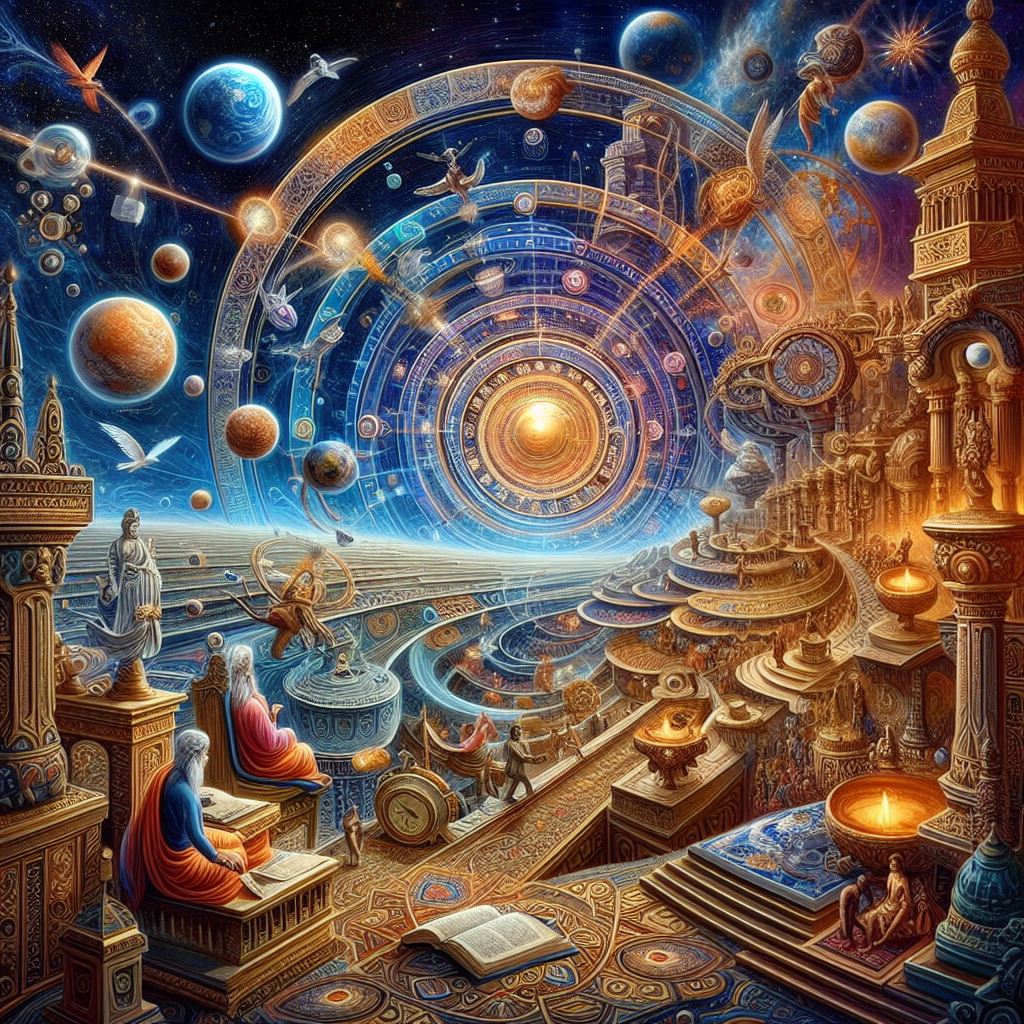
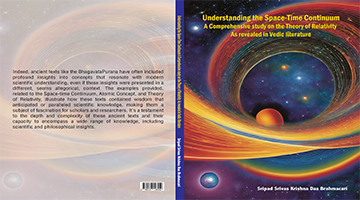
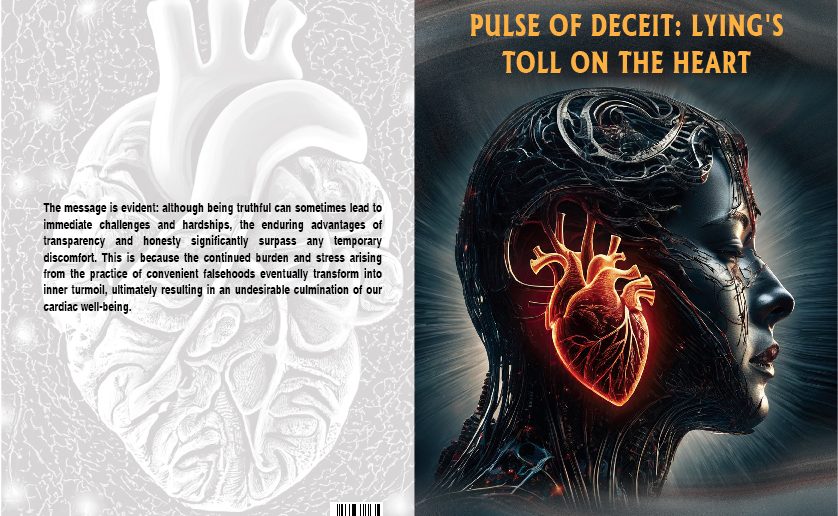





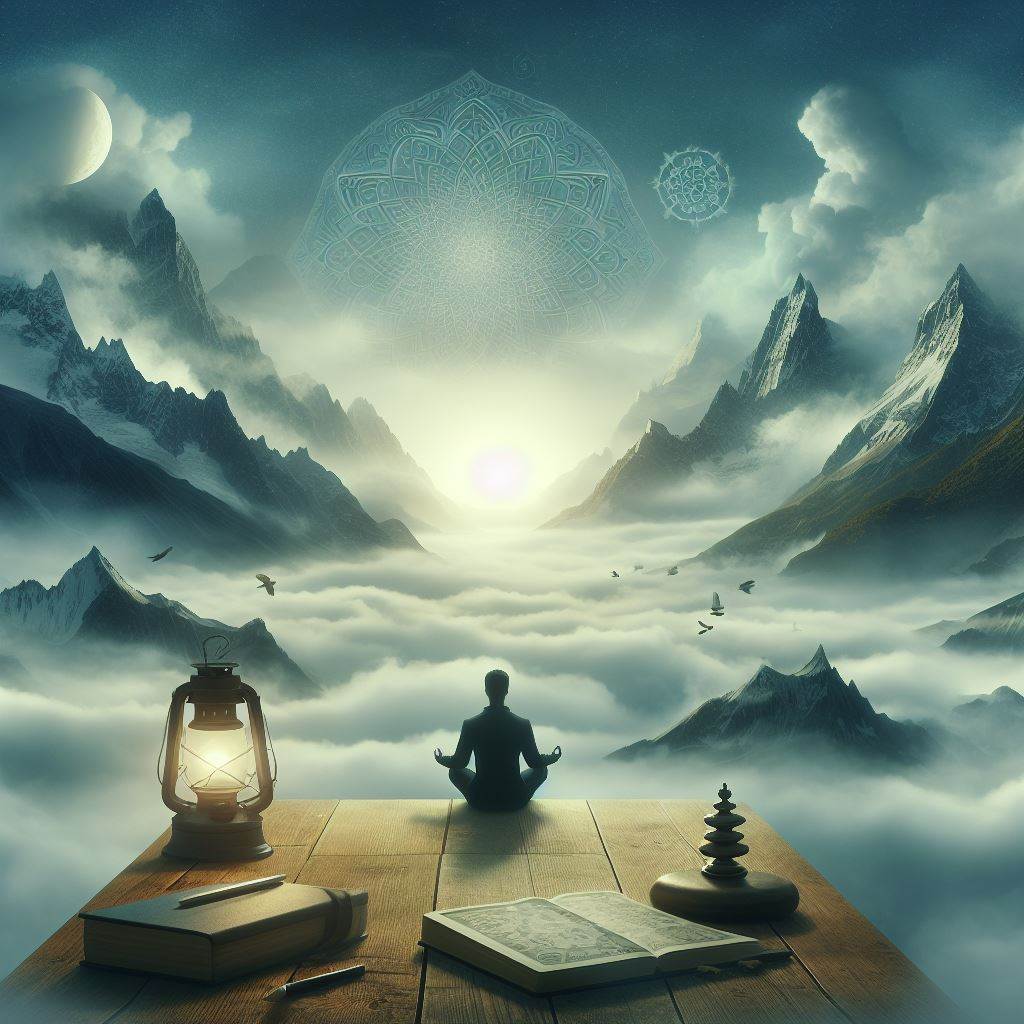
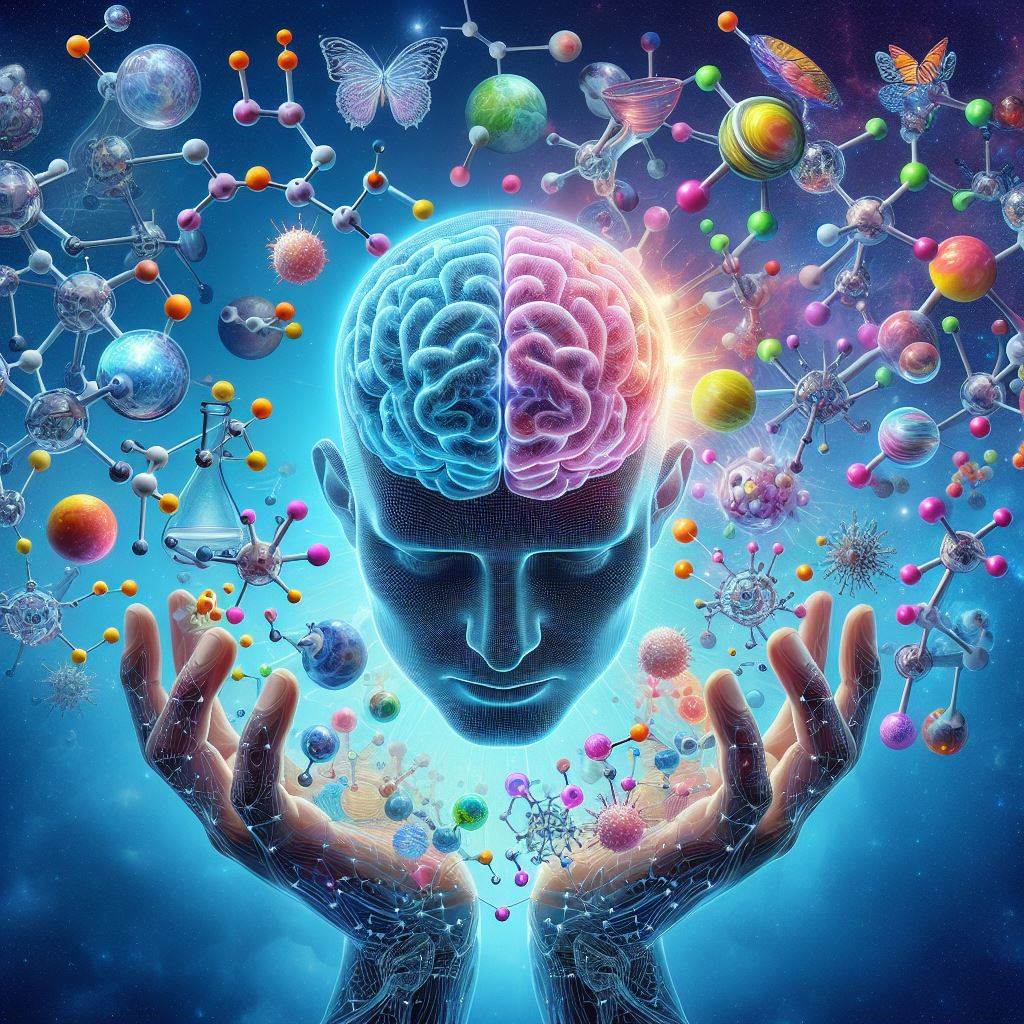




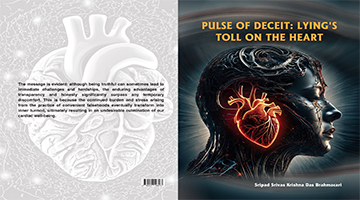

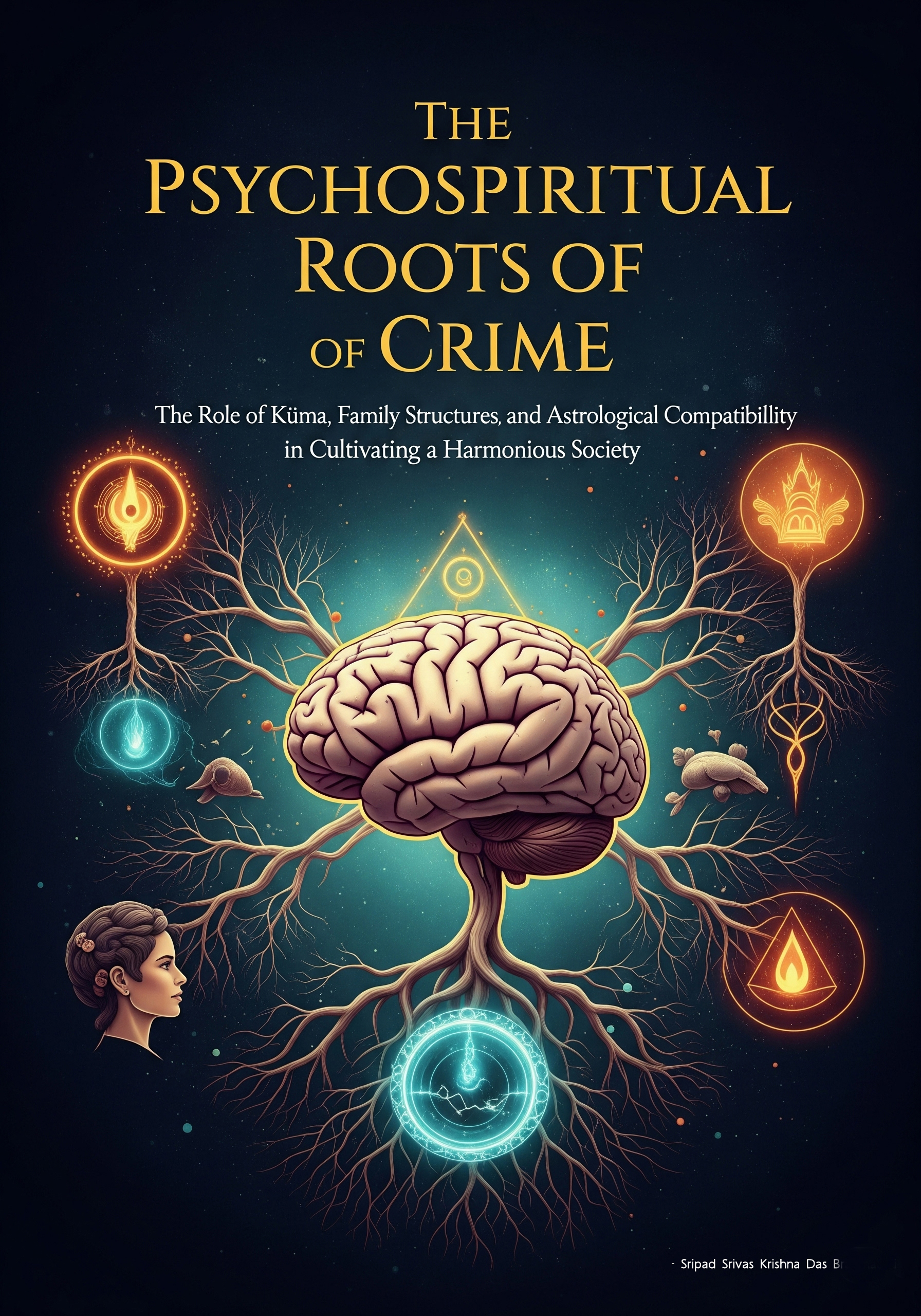
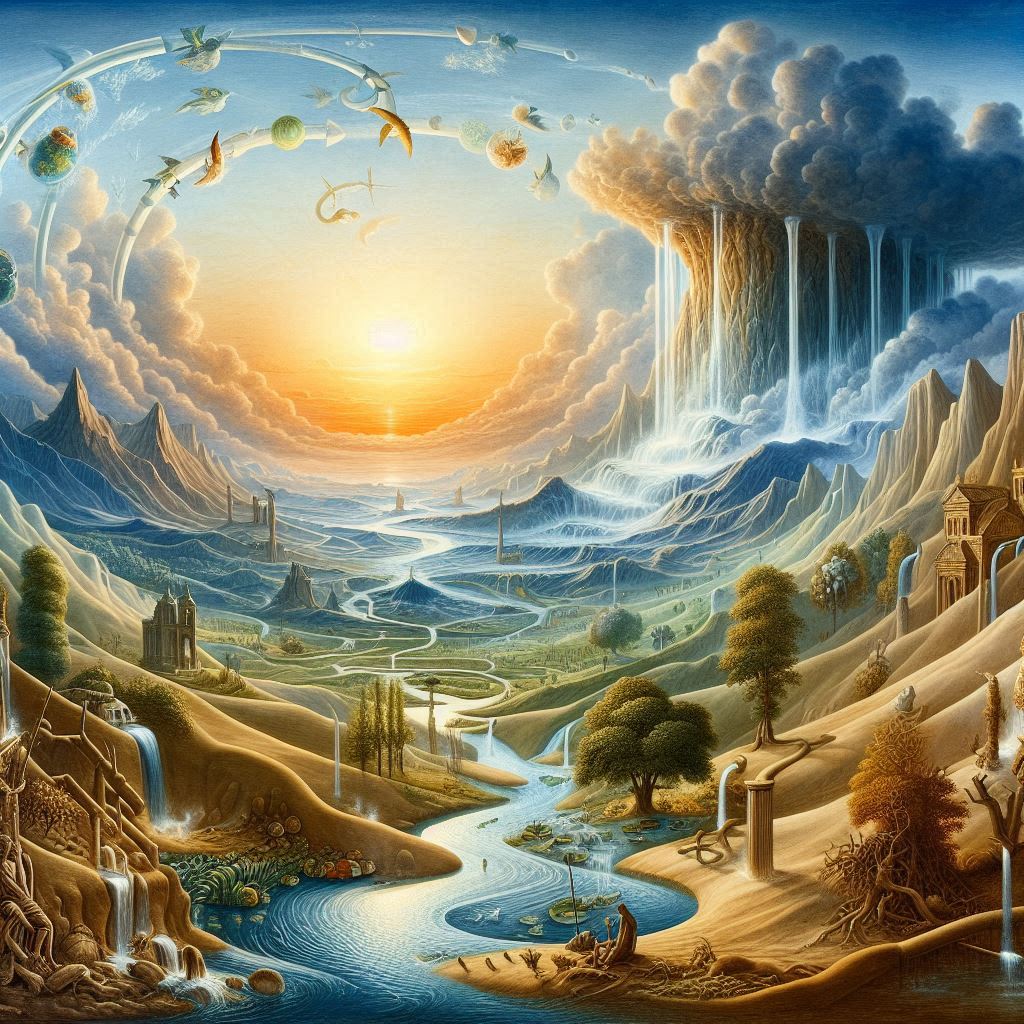
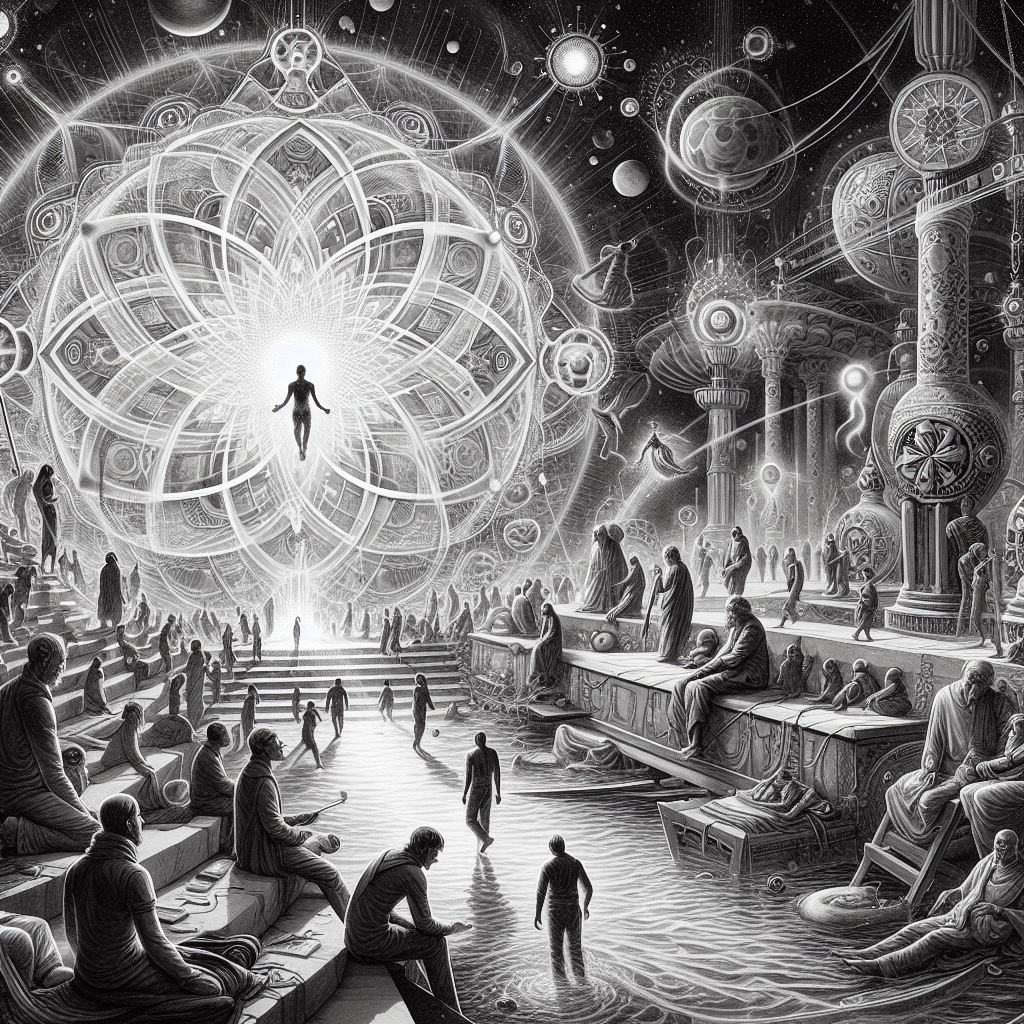
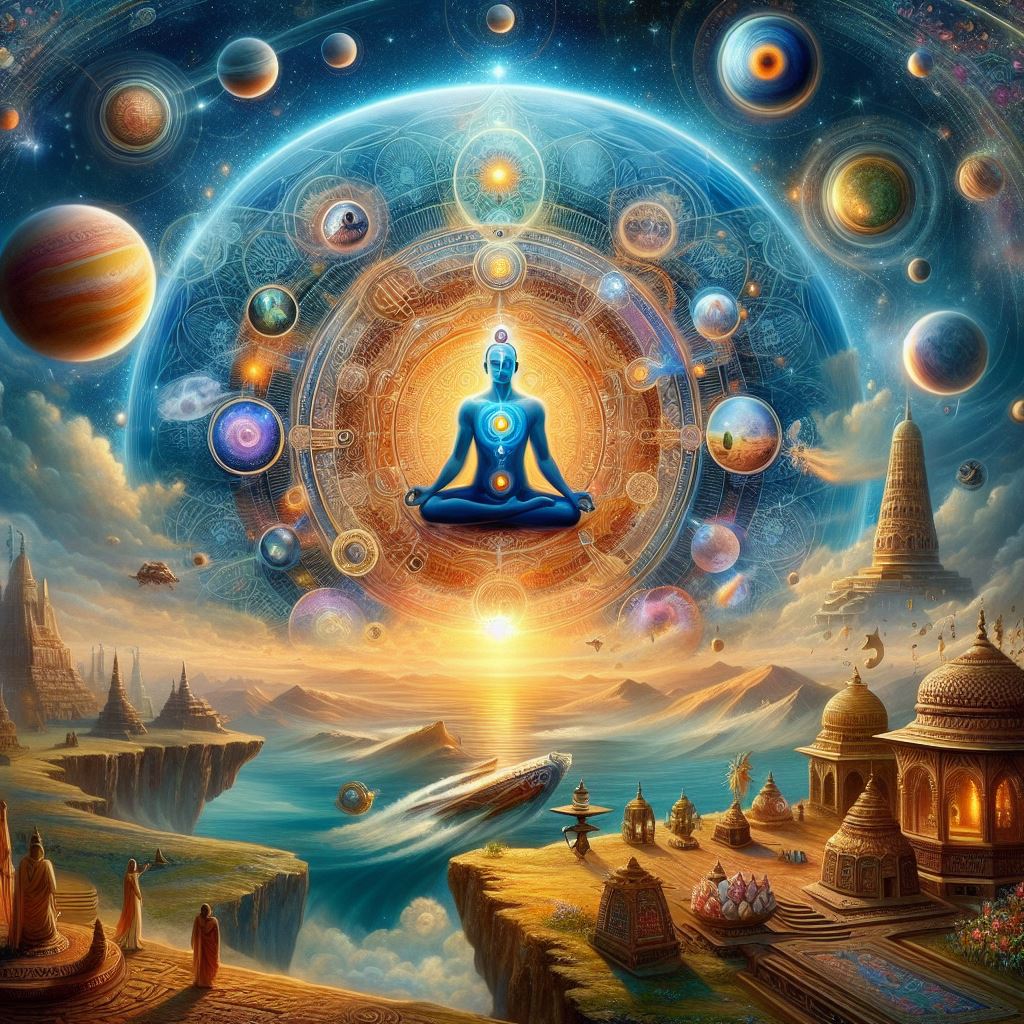
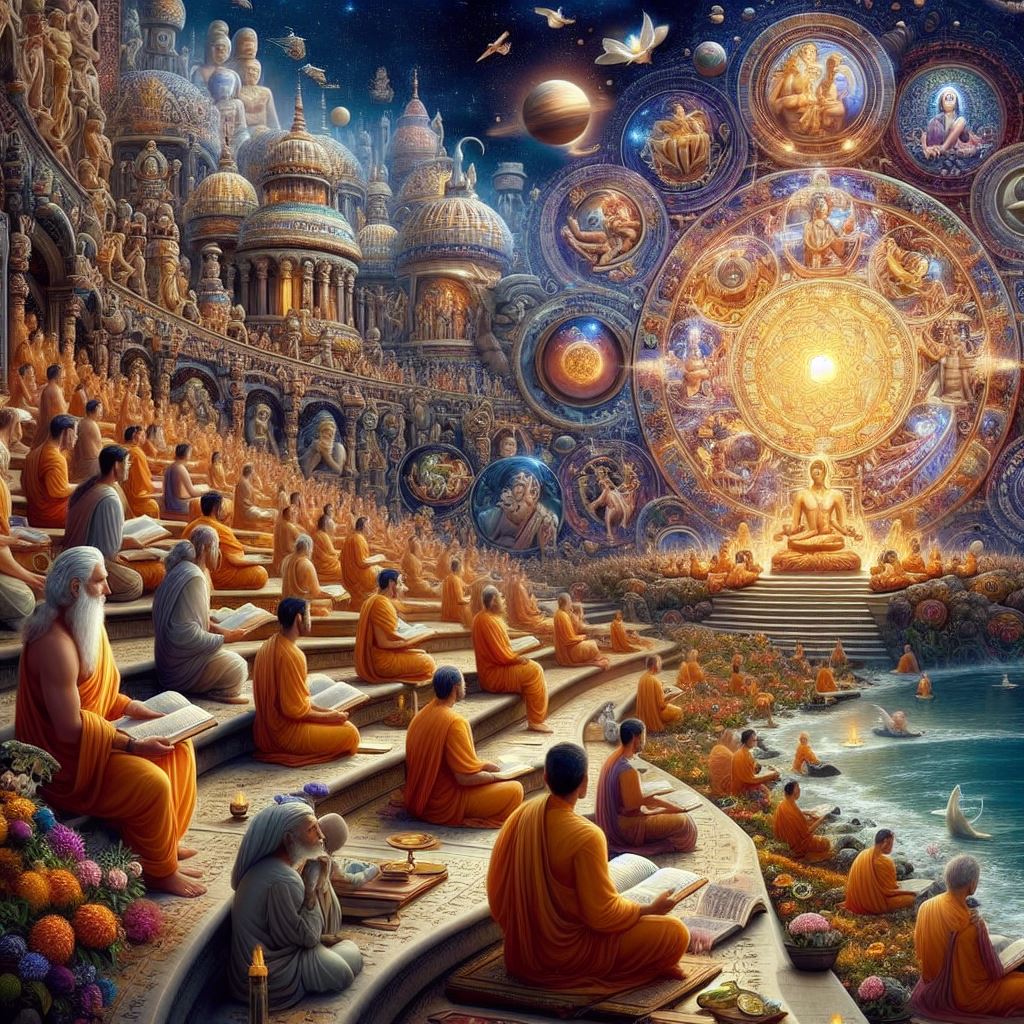
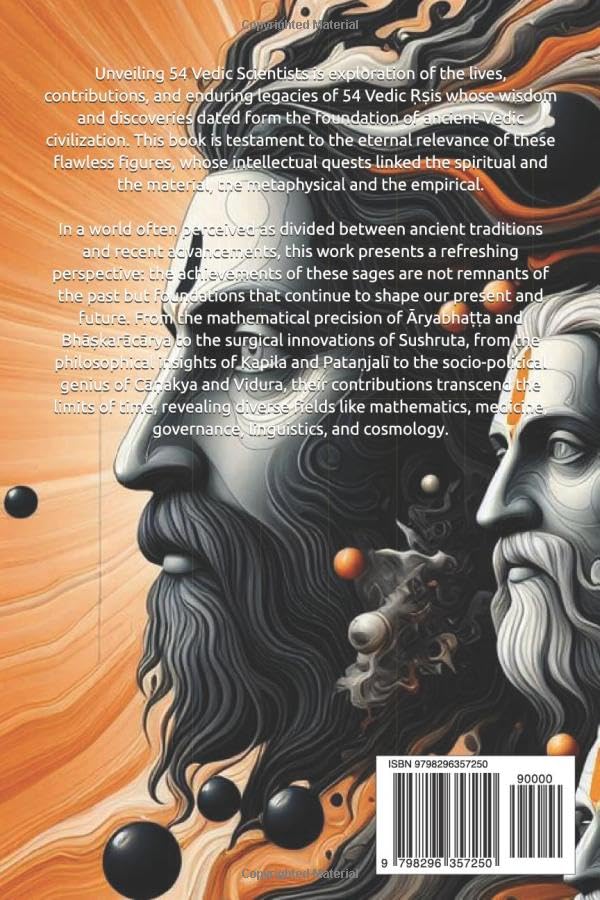
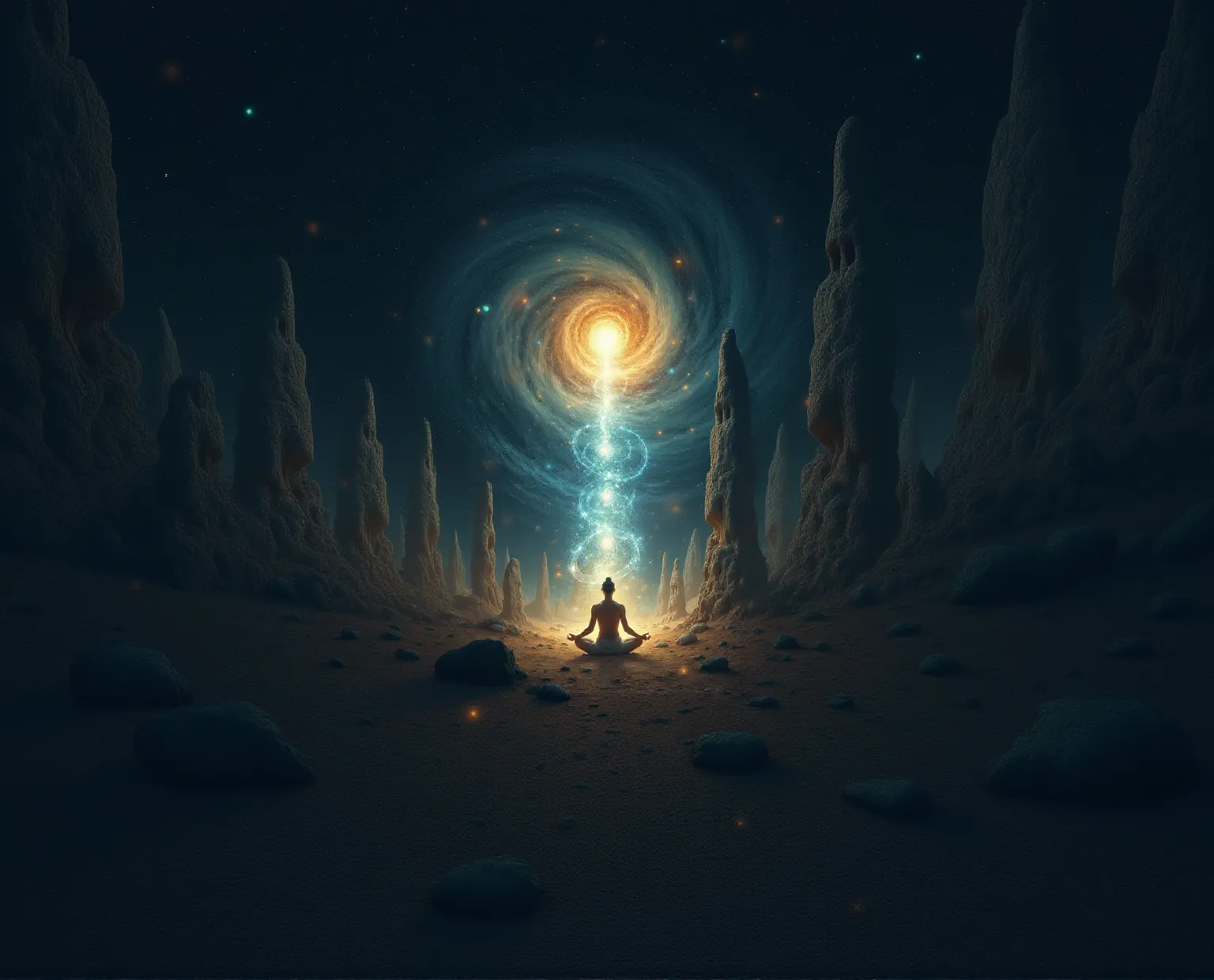
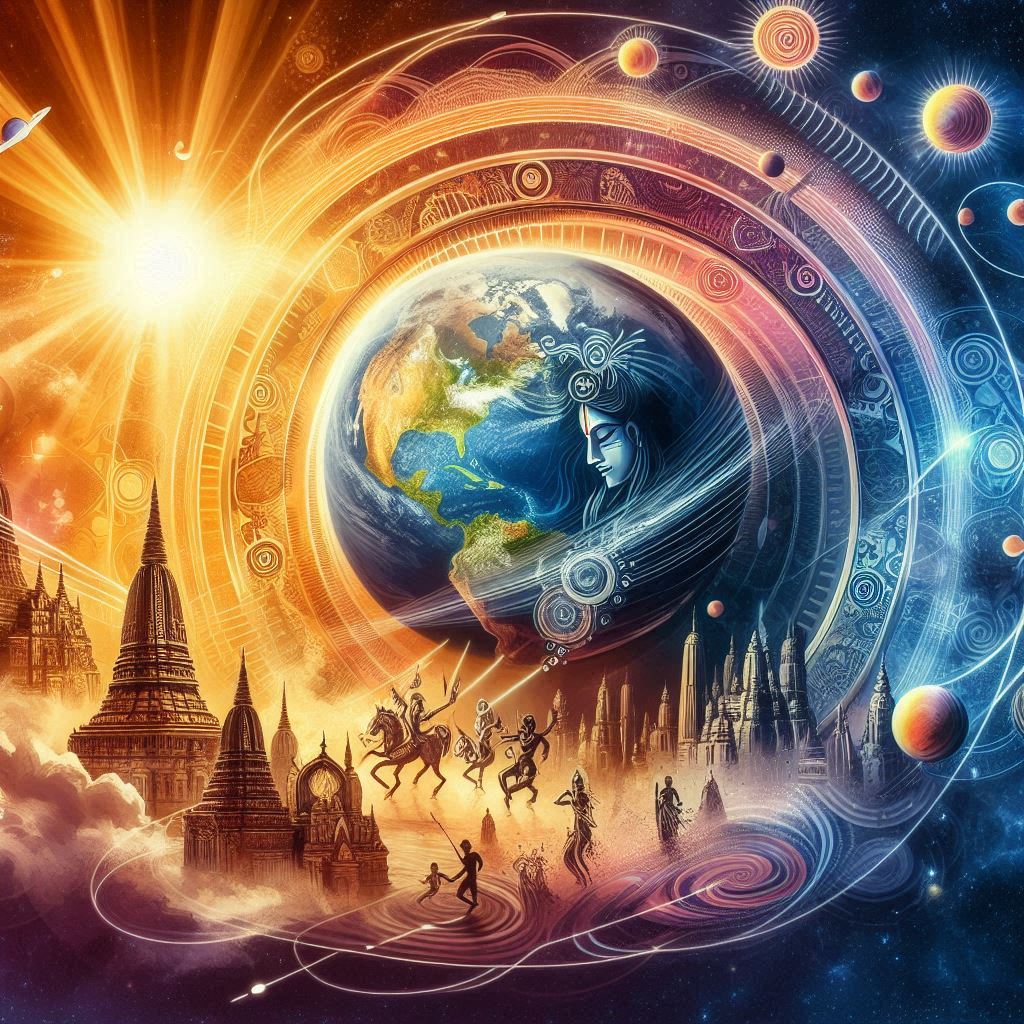
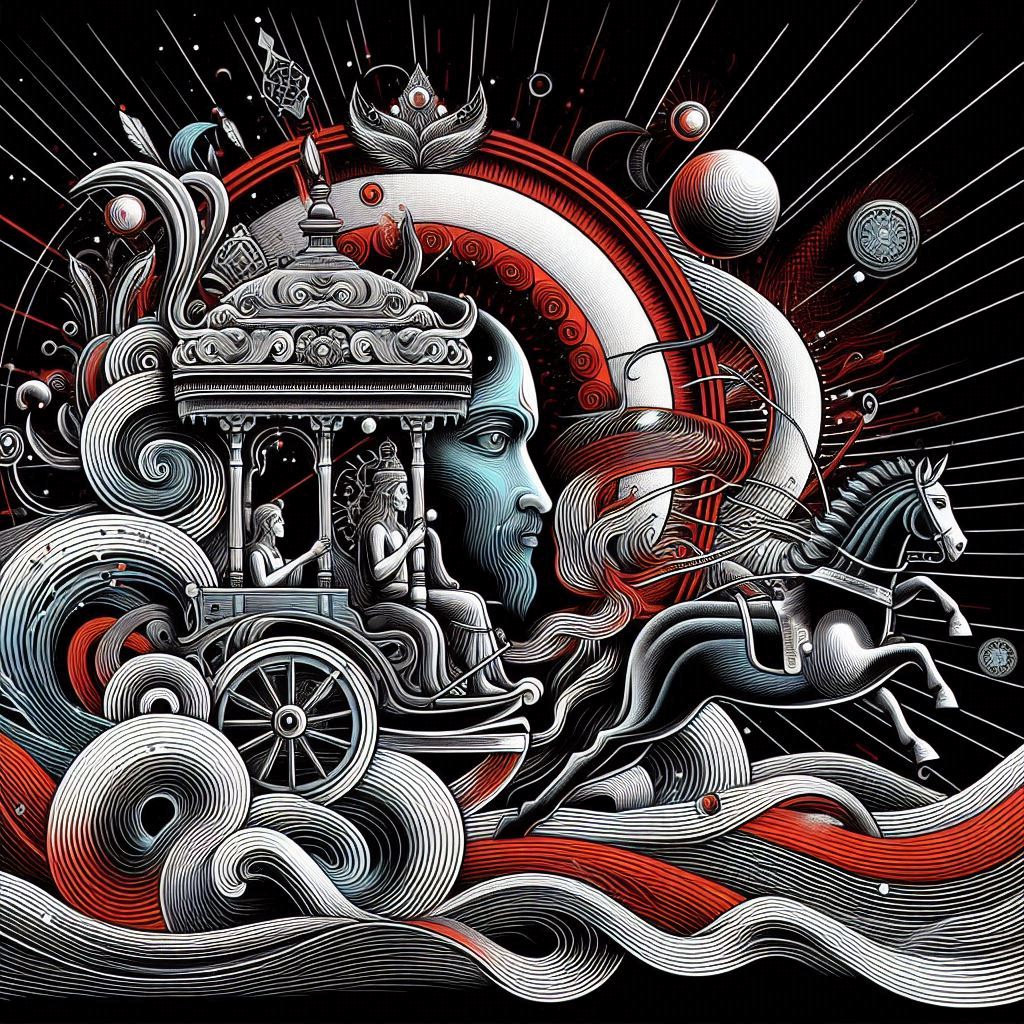
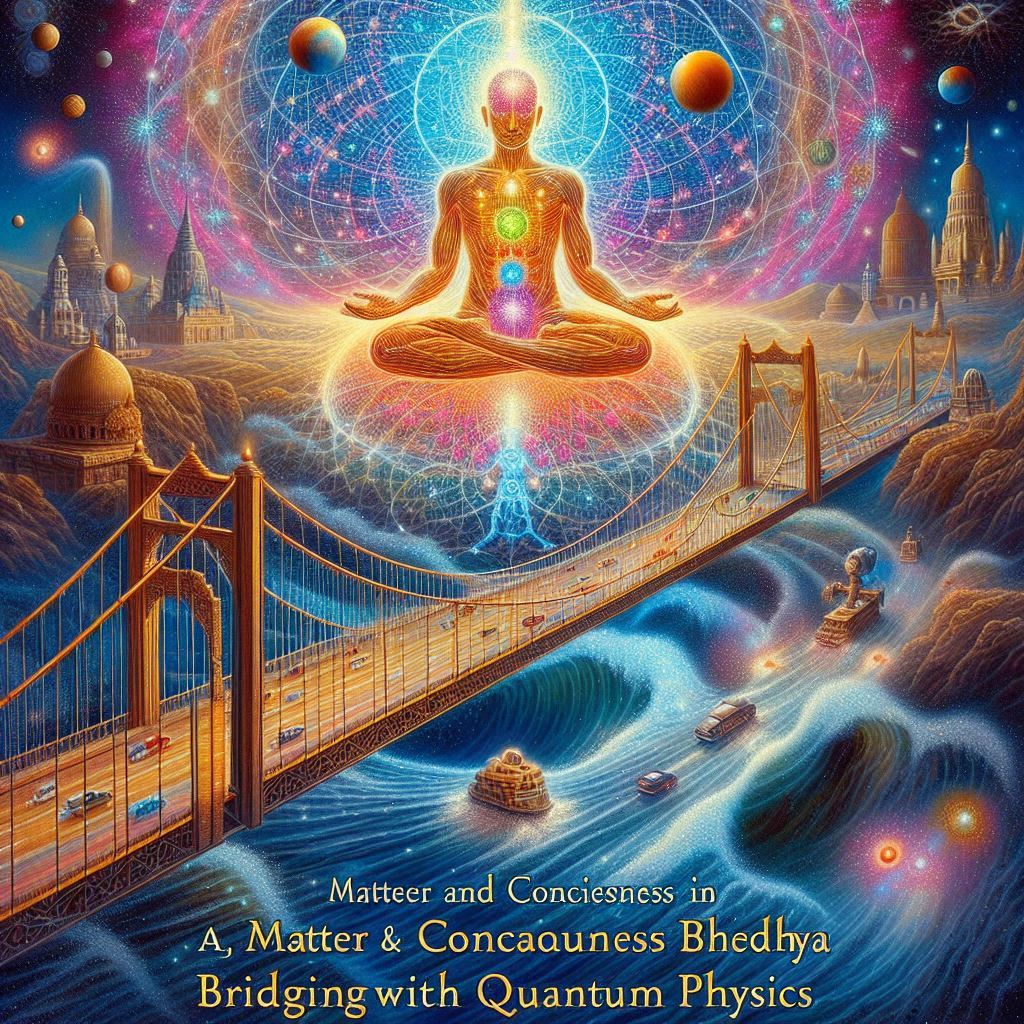
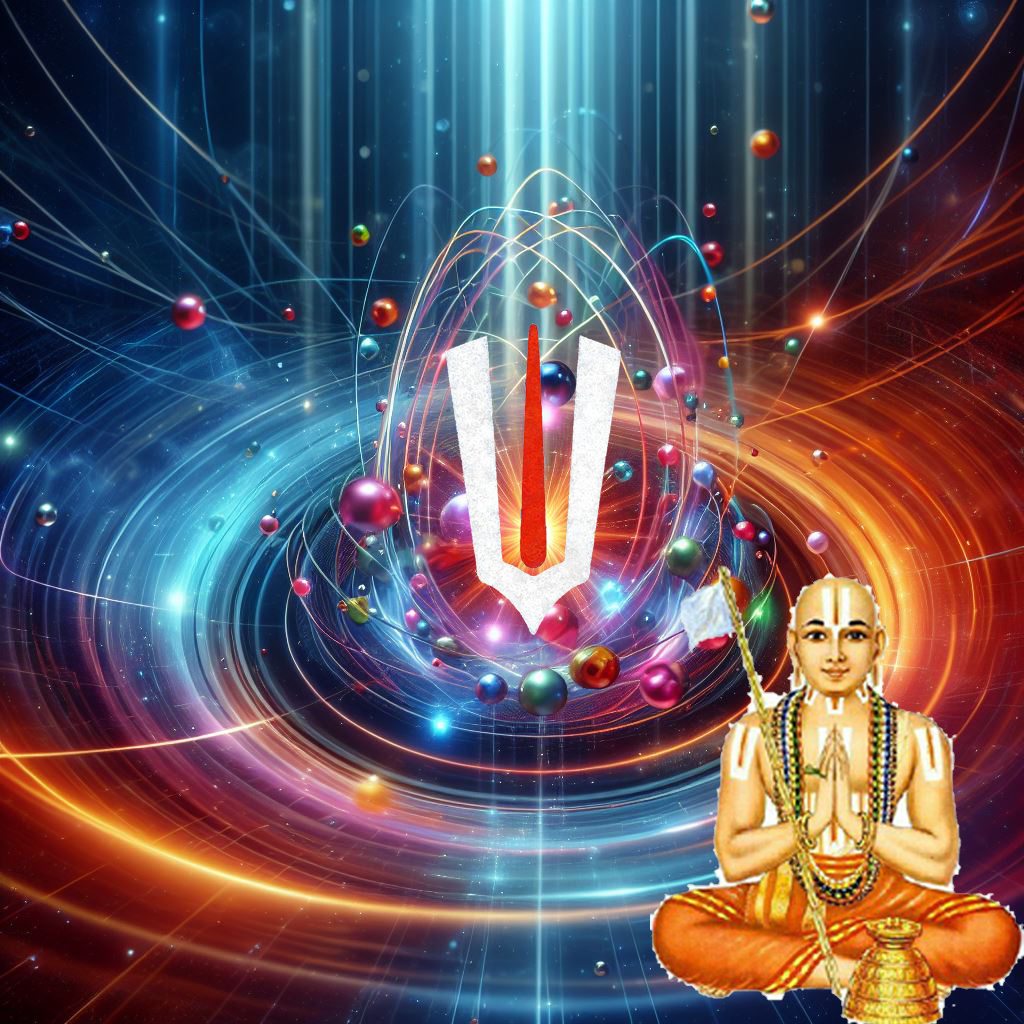
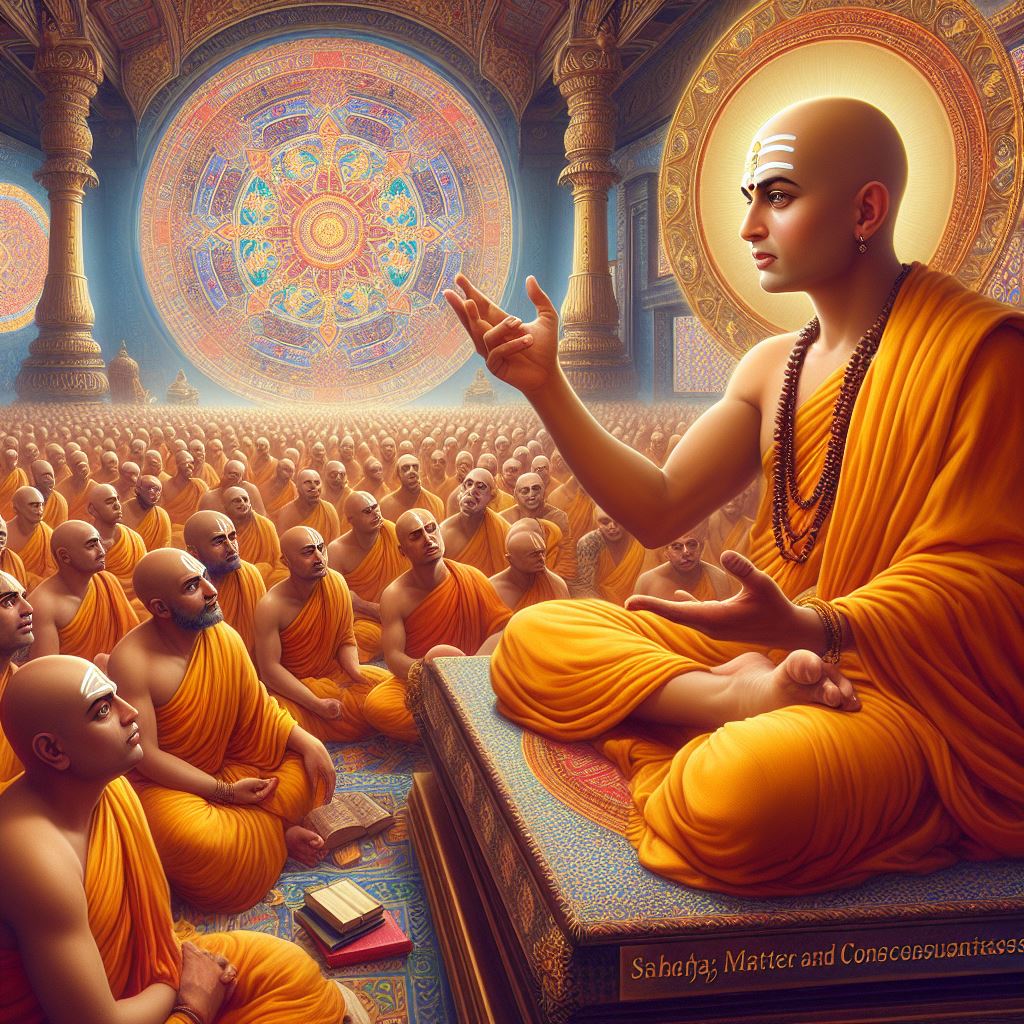
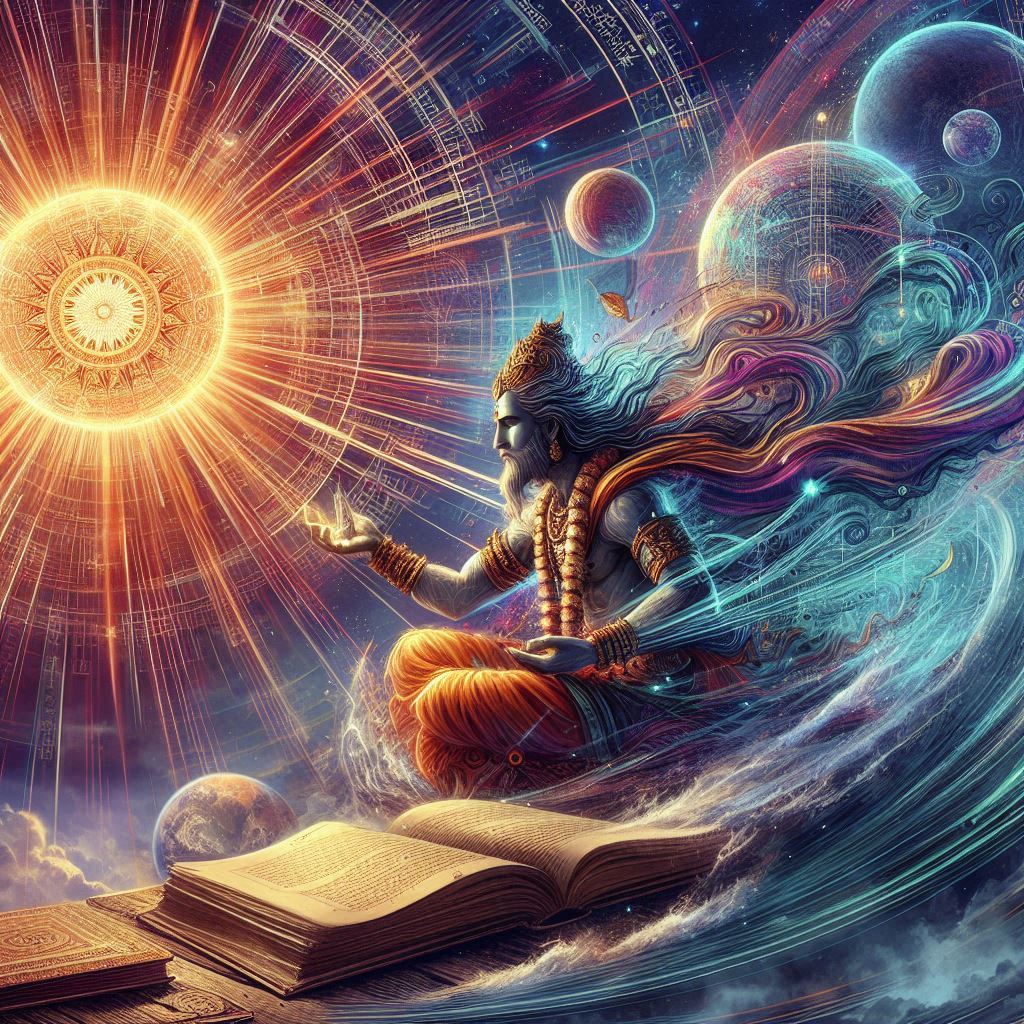
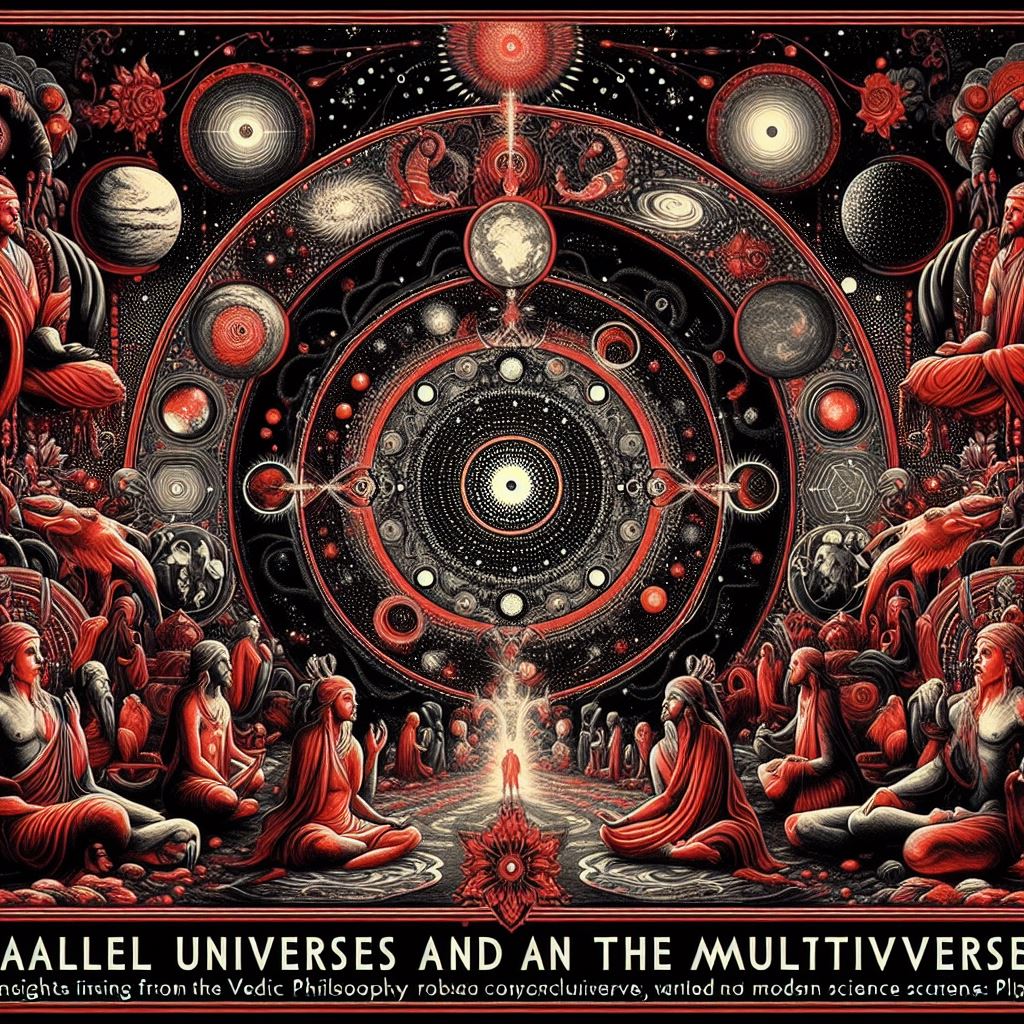

Origin of Science
The Psychospiritual Roots of Crime
Unveiling 54 Vedic Scientists
The Existence of the Soul: Exploring Neuroscience, Quantum Physics and Vedic Philosophy
Temporal Relativity in Vedic Literature: An Interdisciplinary Analysis of Time Dilation Narratives
Acharya Kaṇāda: The Ancient Sage Who Discovered the Atom
Evidence of Vedic Sanātana Hinduism as a Global Dharma
Perception of Quantum Gravity and Field Theory in the Vedas
String Theory as Mentioned in Veda
Sanskrit’s Role in Advancing AI: A Comprehensive Study
The Vedic Model of the Mind: A Contemporary Exploration
Vedic Contributions to Geometry: Unveiling the Origins of Mathematics
Matter and Consciousness in Achintya Bhedābheda: Bridging with Quantum Physics